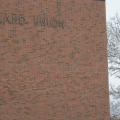Our Shared Place: The Present and Future of Recreation in Greater Yellowstone
The Greater Yellowstone area comprises 34,000 square miles with Yellowstone National Park at its center and is “one of the largest nearly intact temperate-zone ecosystems on Earth,” according to the National Park Service.
The area is also a destination for large numbers of recreational users including hunters and anglers, whitewater enthusiasts, hikers, campers, skiers, motorized vehicle users, tourists and vacation-home owners that contribute significantly to the area’s economy while also putting strains on its environment, wildlife and infrastructure.
“We know Greater Yellowstone is becoming a more popular place to visit, live, and play, yet, there is surprisingly little data on recreational use in the region,” said Brooke Regan, Special Projects Organizer for Greater Yellowstone Coalition.
“This symposium will explore what we know and don’t know about recreation in this vast area,” Regan said. “From that we hope that all the stakeholders in this area can work together in crafting plans for its stewardship and conservation.”
As the nearest public, land-grant university Montana State University has been engaged in a wide range of research and scholarship on the area over the decades, said Nic Rae, dean of MSU’s College of Letters and Science.
“From its geology and ecology, to its complex wildlife interactions, to its importance to Native Americans, to its history with early white explorers, to its future in terms of climate change, land development and economic development the Greater Yellowstone has been a giant laboratory in which our faculty and students have learned and explored,” Rae said.
“MSU has been, and continues to be, committed to providing objective and insightful research and scholarship on the Greater Yellowstone to help its many stakeholders understand and steward the area,” Rae said.
The two-day symposium will include perspectives from the outdoor industry, land managers, researchers, recreationists and more.
The symposium runs from 8:30 a.m., Monday, April 23 through noon, Tuesday, April 24. The symposium is free to students and $99 per person for all others. A complete agenda and registration can be found at: www.greateryellowstone.
About the Greater Yellowstone Coalition: Greater Yellowstone Coalition was founded in 1983 on a simple premise: An ecosystem will remain healthy and wild only if it is kept whole. For nearly 35 years, GYC has been a pioneer in defining and promoting the concept of ecosystem management. Its offices, strategically placed in Montana, Wyoming, and Idaho, allow it to engage in a wide variety of efforts locally, regionally, and nationally to ensure Greater Yellowstone's lands, waters, wildlife are protected now and well into the future.
About Montana State University College of Letters and Science: The college is MSU’s largest, with more than 4,000 students enrolled in nearly 50 majors and 25 minors representing the humanities, natural sciences, mathematics and social sciences. Faculty members in the College of Letters & Science have an impressive record for winning highly competitive national grants to support research and scholarship, with more than $20 million in research grants last year.
Time(s)
This event is over.
Mon. Apr. 23, 2018 8:30am-5pm
Tue. Apr. 24, 2018 8:30am-noon
Location
 MSU SUB (Strand Union Building)
MSU SUB (Strand Union Building)280 Strand Union
Bozeman, MT 59715
(406) 994-4636
montana.edu